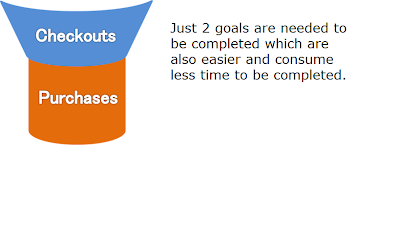Basic conversion funnel reports, user navigation or pathing reports are now outdated and least used methods to measure customer experience.
Analyse the customer journey across devices and across channels before they converted. Understand which digital properties (website, mobile website or mobile app) are high performers and which are laggards in terms of customer experience. Which devices (tablets, mobiles etc), platforms (iOS, Andriod, windows), networks, cities the customers are on. Set up multi-channel funnel reports to understand the online sales cycle, understand how each channel in the funnel path contributed to conversion.
Use pages, app screens, events, goals, e-commerce events and transactions to set up and analyze custom funnels. Where do the customers enter the journey and where do they drop off or loopback to previous stage.
Test multiple versions of landing pages, different ad content, different copies of articles (content marketing), different social media posts etc. using A/B or MVT tests before releasing the most effective content copy or landing page to each segment.
Test multiple versions of goal funnel flows, understand and implement the funnels which have the least drop offs or loopbacks and highest goal completions.
Target multiple versions of pages, promos, content across multiple customer segments to enable personalized customer experiences.
Signature: Roopkumar T.V.
Analyse the customer journey across devices and across channels before they converted. Understand which digital properties (website, mobile website or mobile app) are high performers and which are laggards in terms of customer experience. Which devices (tablets, mobiles etc), platforms (iOS, Andriod, windows), networks, cities the customers are on. Set up multi-channel funnel reports to understand the online sales cycle, understand how each channel in the funnel path contributed to conversion.
Use pages, app screens, events, goals, e-commerce events and transactions to set up and analyze custom funnels. Where do the customers enter the journey and where do they drop off or loopback to previous stage.
Test multiple versions of landing pages, different ad content, different copies of articles (content marketing), different social media posts etc. using A/B or MVT tests before releasing the most effective content copy or landing page to each segment.
Test multiple versions of goal funnel flows, understand and implement the funnels which have the least drop offs or loopbacks and highest goal completions.
Target multiple versions of pages, promos, content across multiple customer segments to enable personalized customer experiences.
Signature: Roopkumar T.V.




